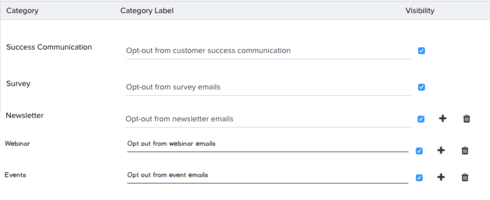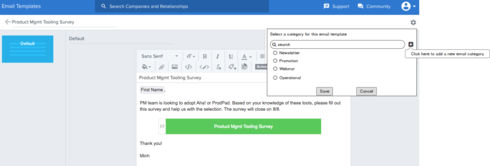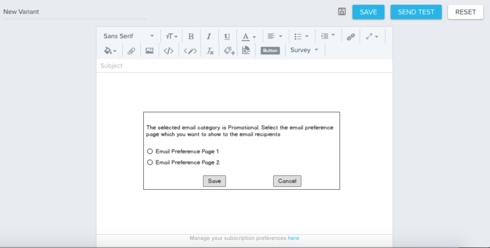One of the use cases we have heard from customers is the need to add more opt out categories within Gainsight. The paint points are listed below -
https://community.gainsight.com/gainsight/topics/ability-to-edit-opt-out-setting-categories-and-add-more-categories-to-the-opt-out-options
Keeping the above use cases in mind, please find below the approach we are internally thinking about for addressing the use cases -
- Create Email Categories -
2. Create Custom Email Preference Pages - As part of custom email preference page creation, you can choose the email categories and add it to the page. We are planning to allow multiple email subscription pages and configure the categories and personalize as per your need. This use case is primarily for organizations that sell multiple product lines or sell in different countries have a need for multiple preference centers. For customers who do not have this complexity , they can continue to add custom categories and use the default page for unsubscribe.
3. Email Template Configuration - As part of email template , you can choose the category which the email belongs to and configure the unsubscribe page(in case you have multiple pages configured)
4. As part of program distribution in Journey Orchestrator , based on the user unsubscribe and the category of the email , we will decide if they can receive the email or not.
[i]
We are looking for feedback on the above proposal and guide us with respect to whether the above approach will meet the use case of Testing program design. [i]Are there any other use cases which you felt we have missed?
As we are in the early stages of this design, things might become flexible in the future based on other considerations or use cases. :)
Thanks,
Abhishek S





